Steven Hawken
USF-MAE: Ultrasound Self-Supervised Foundation Model with Masked Autoencoding
Oct 27, 2025Abstract:Ultrasound imaging is one of the most widely used diagnostic modalities, offering real-time, radiation-free assessment across diverse clinical domains. However, interpretation of ultrasound images remains challenging due to high noise levels, operator dependence, and limited field of view, resulting in substantial inter-observer variability. Current Deep Learning approaches are hindered by the scarcity of large labeled datasets and the domain gap between general and sonographic images, which limits the transferability of models pretrained on non-medical data. To address these challenges, we introduce the Ultrasound Self-Supervised Foundation Model with Masked Autoencoding (USF-MAE), the first large-scale self-supervised MAE framework pretrained exclusively on ultrasound data. The model was pre-trained on 370,000 2D and 3D ultrasound images curated from 46 open-source datasets, collectively termed OpenUS-46, spanning over twenty anatomical regions. This curated dataset has been made publicly available to facilitate further research and reproducibility. Using a Vision Transformer encoder-decoder architecture, USF-MAE reconstructs masked image patches, enabling it to learn rich, modality-specific representations directly from unlabeled data. The pretrained encoder was fine-tuned on three public downstream classification benchmarks: BUS-BRA (breast cancer), MMOTU-2D (ovarian tumors), and GIST514-DB (gastrointestinal stromal tumors). Across all tasks, USF-MAE consistently outperformed conventional CNN and ViT baselines, achieving F1-scores of 81.6%, 79.6%, and 82.4%, respectively. Despite not using labels during pretraining, USF-MAE approached the performance of the supervised foundation model UltraSam on breast cancer classification and surpassed it on the other tasks, demonstrating strong cross-anatomical generalization.
CAManim: Animating end-to-end network activation maps
Dec 19, 2023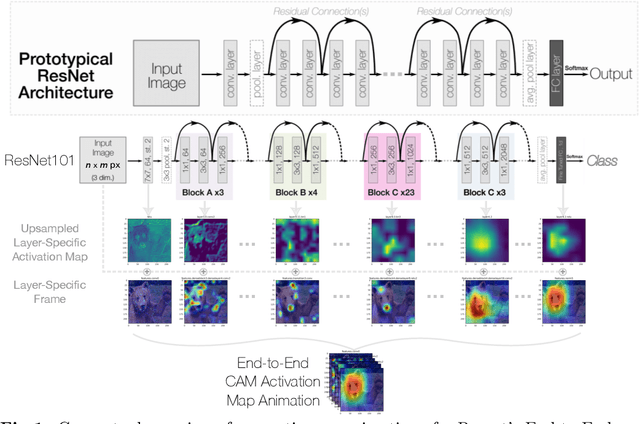

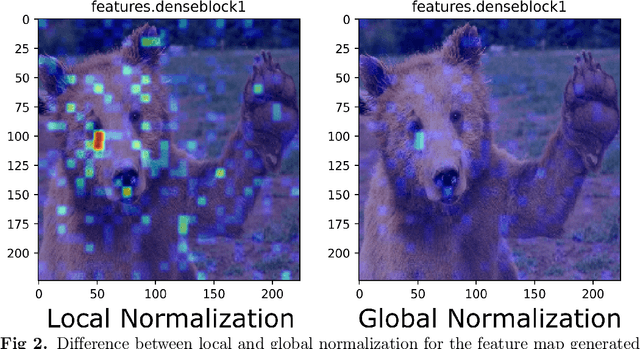
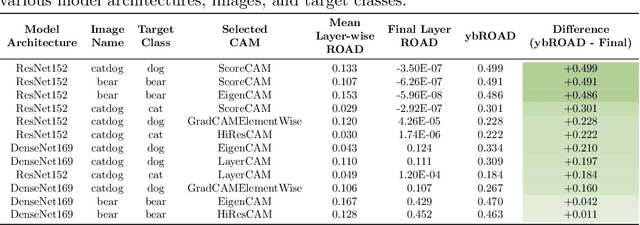
Abstract:Deep neural networks have been widely adopted in numerous domains due to their high performance and accessibility to developers and application-specific end-users. Fundamental to image-based applications is the development of Convolutional Neural Networks (CNNs), which possess the ability to automatically extract features from data. However, comprehending these complex models and their learned representations, which typically comprise millions of parameters and numerous layers, remains a challenge for both developers and end-users. This challenge arises due to the absence of interpretable and transparent tools to make sense of black-box models. There exists a growing body of Explainable Artificial Intelligence (XAI) literature, including a collection of methods denoted Class Activation Maps (CAMs), that seek to demystify what representations the model learns from the data, how it informs a given prediction, and why it, at times, performs poorly in certain tasks. We propose a novel XAI visualization method denoted CAManim that seeks to simultaneously broaden and focus end-user understanding of CNN predictions by animating the CAM-based network activation maps through all layers, effectively depicting from end-to-end how a model progressively arrives at the final layer activation. Herein, we demonstrate that CAManim works with any CAM-based method and various CNN architectures. Beyond qualitative model assessments, we additionally propose a novel quantitative assessment that expands upon the Remove and Debias (ROAD) metric, pairing the qualitative end-to-end network visual explanations assessment with our novel quantitative "yellow brick ROAD" assessment (ybROAD). This builds upon prior research to address the increasing demand for interpretable, robust, and transparent model assessment methodology, ultimately improving an end-user's trust in a given model's predictions.
MetaCAM: Ensemble-Based Class Activation Map
Jul 31, 2023
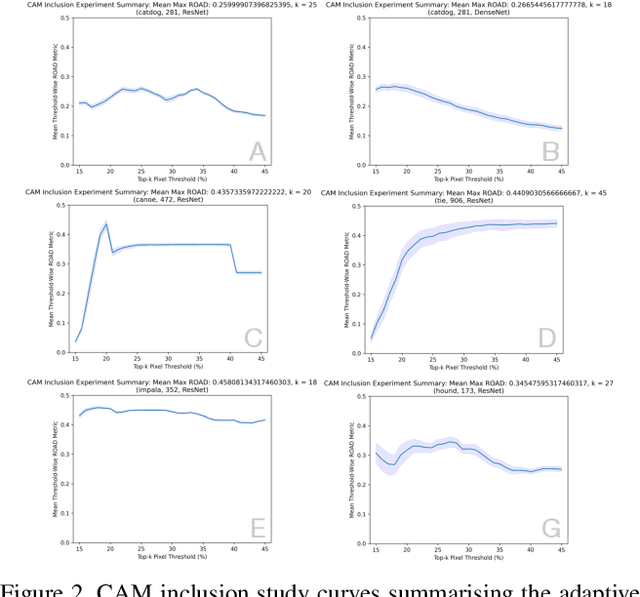
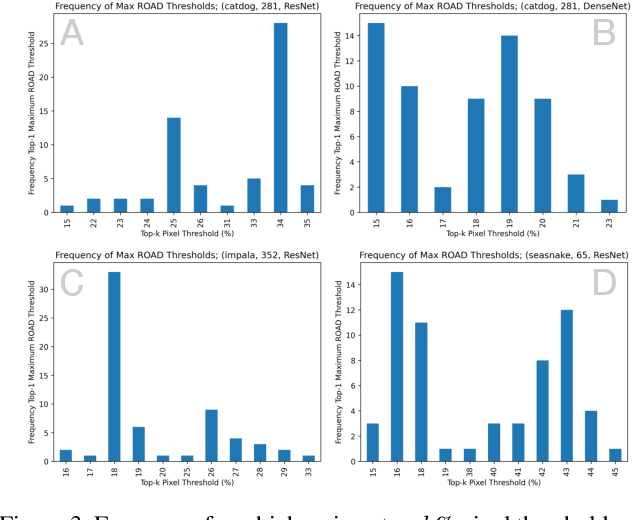
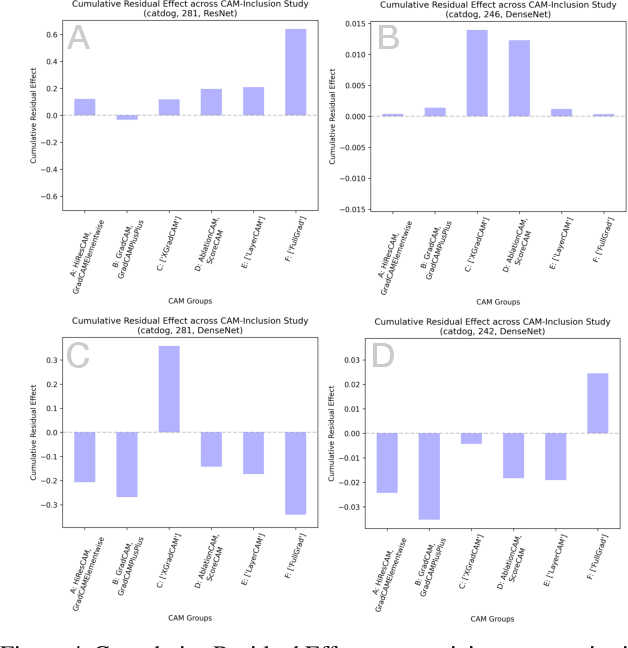
Abstract:The need for clear, trustworthy explanations of deep learning model predictions is essential for high-criticality fields, such as medicine and biometric identification. Class Activation Maps (CAMs) are an increasingly popular category of visual explanation methods for Convolutional Neural Networks (CNNs). However, the performance of individual CAMs depends largely on experimental parameters such as the selected image, target class, and model. Here, we propose MetaCAM, an ensemble-based method for combining multiple existing CAM methods based on the consensus of the top-k% most highly activated pixels across component CAMs. We perform experiments to quantifiably determine the optimal combination of 11 CAMs for a given MetaCAM experiment. A new method denoted Cumulative Residual Effect (CRE) is proposed to summarize large-scale ensemble-based experiments. We also present adaptive thresholding and demonstrate how it can be applied to individual CAMs to improve their performance, measured using pixel perturbation method Remove and Debias (ROAD). Lastly, we show that MetaCAM outperforms existing CAMs and refines the most salient regions of images used for model predictions. In a specific example, MetaCAM improved ROAD performance to 0.393 compared to 11 individual CAMs with ranges from -0.101-0.172, demonstrating the importance of combining CAMs through an ensembling method and adaptive thresholding.
Deep ROC Analysis and AUC as Balanced Average Accuracy to Improve Model Selection, Understanding and Interpretation
Mar 21, 2021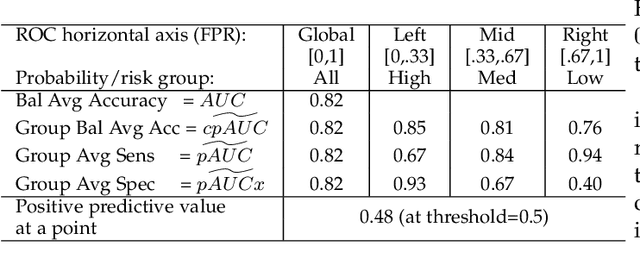
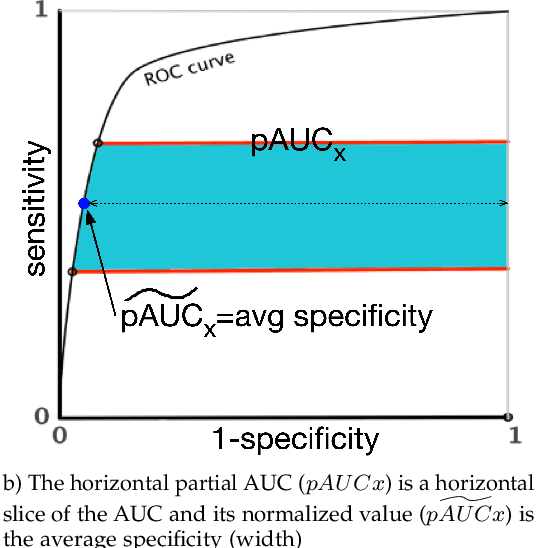
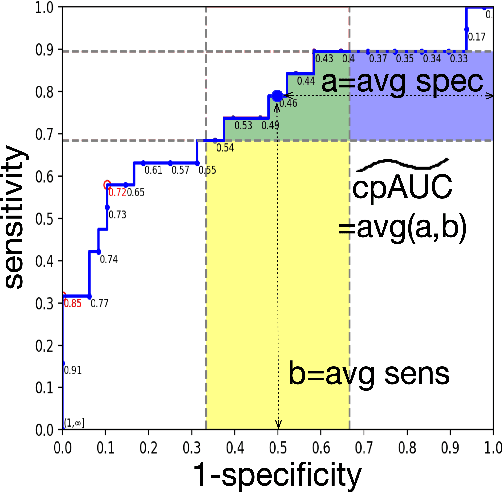
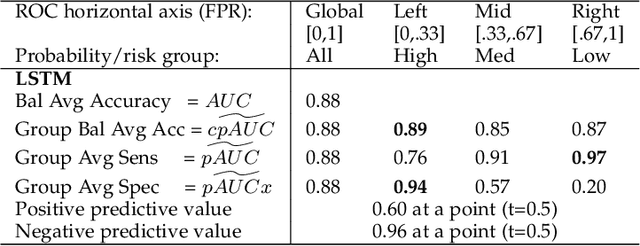
Abstract:Optimal performance is critical for decision-making tasks from medicine to autonomous driving, however common performance measures may be too general or too specific. For binary classifiers, diagnostic tests or prognosis at a timepoint, measures such as the area under the receiver operating characteristic curve, or the area under the precision recall curve, are too general because they include unrealistic decision thresholds. On the other hand, measures such as accuracy, sensitivity or the F1 score are measures at a single threshold that reflect an individual single probability or predicted risk, rather than a range of individuals or risk. We propose a method in between, deep ROC analysis, that examines groups of probabilities or predicted risks for more insightful analysis. We translate esoteric measures into familiar terms: AUC and the normalized concordant partial AUC are balanced average accuracy (a new finding); the normalized partial AUC is average sensitivity; and the normalized horizontal partial AUC is average specificity. Along with post-test measures, we provide a method that can improve model selection in some cases and provide interpretation and assurance for patients in each risk group. We demonstrate deep ROC analysis in two case studies and provide a toolkit in Python.
 Add to Chrome
Add to Chrome Add to Firefox
Add to Firefox Add to Edge
Add to Edge